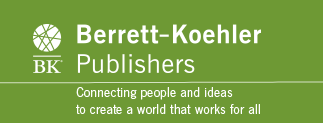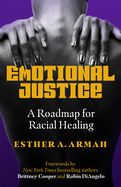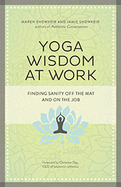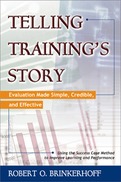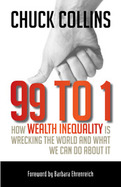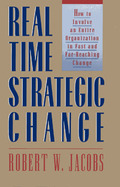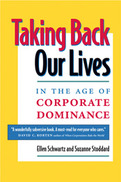2022
In this groundbreaking book, Esther Armah argues that the crucial missing piece to racial healing and sustainable equity is emotional justice-a new racial healing language to help us do our emotional work. This work is part of the emotional reckoning we must navigate if racial healing is to be more than a dream. We all-white, Black, Brown-have our emotional work that we need to do. But that work is not the same for all of us.
This emotional work means unlearning the language of whiteness, a narrative that centers white people, particularly white men, no matter the deadly cost and consequence to all women and to global Black and Brown people. That's why a new racial healing language is crucial.
Emotional Justice grapples with how a legacy of untreated trauma from oppressive systems has created and sustained dual deadly fictions: white superiority and Black inferiority that shape-and wound-all of us. These systems must be dismantled to build a future that serves justice to everyone, not just some of us. We are the dismantlers we have been waiting for, and emotional justice is the game changer for a just future that benefits all of us.
2013
Based on careful analysis of participants' first-person accounts of their experiences in a training initiative, SCM doesn't just measure the impact of training, but pinpoints the very factors that make or break training success. Filled with examples, illustrations, tools, and checklists, Telling Training's Story not only shares the power of the Success Case Method to evaluate training, it also offers practical step-by-step guidelines for increasing the ROI of future learning and performance initiatives.
• Offers a simple, straightforward yet robust and convincing method for demonstrating the effectiveness of training
• A detailed how-to manual, filled with tools, examples, checklists, and step-by-step advice
What all trainers know in their gut--that training and development is valuable and worthwhile--is something that needs to be proven over and over to clients focused on bottom-line results. As a result, there have been many books and articles about evaluating training, but most of the methods they describe are too elaborate, too complex, too costly, too difficult to explain--or worse, produce data nobody believes.
In Telling Training's Story, Story Robert Brinkerhoff offers a simple, compelling way of evaluating training's impact: The Success Case Method (SCM). Based on careful analysis of participants' first-person accounts of their experiences in a training initiative, SCM has been proven robust enough to withstand scrutiny from both a research and a business perspective, and will not choke real world practitioners and their clients with cumbersome methods and arcane statistical gyrations. And SCM does not just measure and document the impact of training, it uncovers and pinpoints the factors that make or break training success. Armed with this information, training leaders and their clients can dramatically increase the ROI of future learning and performance initiatives.
Filled with examples, illustrations, tools, and checklists, Telling Training’s Story not only shares the power of the Success Case Method to evaluate training, it also offers practical step-by-step guidelines for creating SCM projects and ensuring meaningful results.
2012
Brings together facts and figures showing what "the 99% and the 1%" divide means in the real world and the damage it causes.
Identifies the social and historical forces that created and perpetuate this divide
Offers concrete proposals for closing the inequality gap
For over thirty years, we've lived through a radical redistribution of wealth-upward, to a tiny fraction of the population. It's as though we're undertaking a bizarre social experiment to see how much inequality a democratic society can tolderate.
As a result "We are the 99%," the rallying cry of the Occupy movement, has spread far beyond its ranks. But who are the 99 percent? Who are the 1 percent? How extensive and systematic is inequality throughout society? What are its true causes and consequences? How is inequality changing our world? And what can be done about it?
For many years, Chuck Collins has been a leading voice and activist on these questions. In this book he marshals wide-ranging data from a variery of sources to paint a graphic picture of how disparities in wealth and power play out in America and the world. For the first time, this book reveals the concrete meaning of "the 99% and the 1%," looking not just at individual households but at the business world, the media, and the earth as a whole.
Collins identifies the shifts in social values, political power, and economic policy that have led to our current era of extreme inequality -- particularly the way Wall Street has managed to rig the rules of the game in favor of the 1 percent-and surveys the havoc inequality has wreaked on virtually every aspect of society. But there is hope. Not only does he offer common-sense proposals for closing the inequality gap, but Collins provides a guide to many of the groups-including some made up of millionaires-that are working to bring about a society that works for everybody: for the 100 percent. This is a struggle that can be won. After all, the odd are 99 to 1 in our favor.
The authors use hard-hitting examples and illuminating personal vignettes about confronting fear, anger, death, family problems, and the stultifying effects of staying in the "comfort zone." They detail over 75 steps for personal and societal actions-some quick and immediate, others in-depth and long term-for retaking control of our lives. The authors include provocative questions for reflection that shock, prod, and jump-start the reader into thinking about what matters most to them.
Deeply moving, outrageous, encouraging, compelling, and inspiring, Taking Back Our Lives in the Age of Corporate Dominance blends unrelenting candor with the comfort of real-life stories of hope-and ultimately shows us that choice is the most important tool we have for reviving our lives and our world.
- Reveals the profound impact of the global corporate economy on our daily lives
- Details 75 immediate and long-term Action Steps for empowering ourselves both individually and as a society
- Offers specific tips, ideas, and resources on how to pare down our lives and open up our time
- Provides questions for reflection that help readers to think in new ways about what matters most to them
